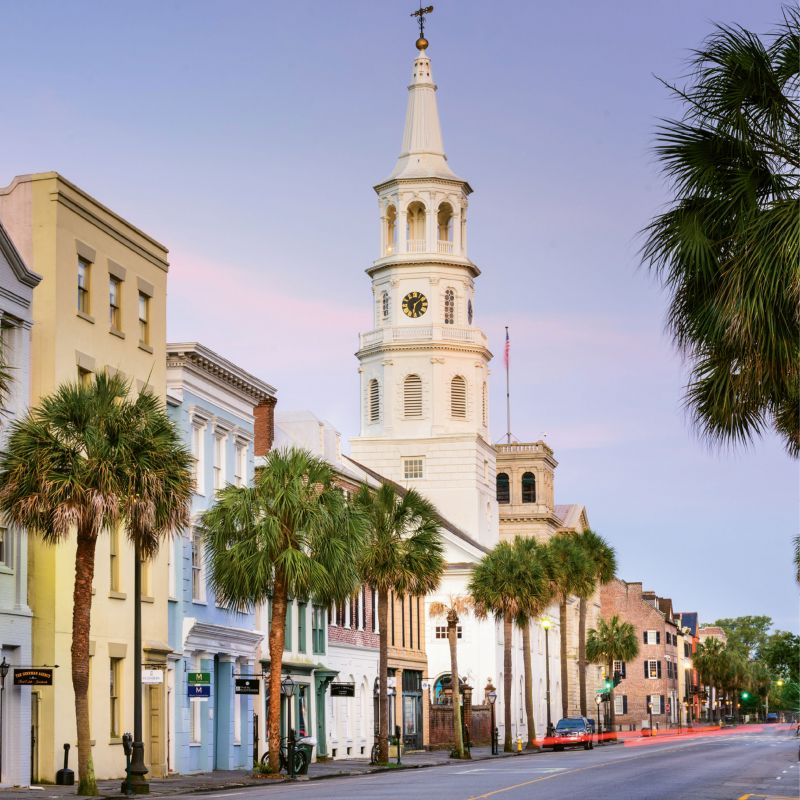
Take this Quiz
Find out if you qualify as a Charlestonian (or as close as you can without having been born here) or if you’re “from off”—way, way off
1. Which of the following phrases may be used by a Charleston man at any time in response to any statement?
a) “Ah hee dat, Bo!”
b) “That’s high cotton!”
c) “Gotta fish when the fish are bitin’.”
d) “Frankly, my dear, I don’t give a damn.”
2. What time is the traditional dinner here?
a) 2 p.m.
b) 5 p.m.
c) 6:30 p.m.
d) 8 p.m.
3. Pluff mud...
a) Can be spelled “plough.”
b) Serves as the floor of the most diverse ecosystem in the world.
c) Can suck you in up to your waist faster than quicksand.
d) Smells like the ninth level of Hell when disturbed.
e) All of the above
4. True or false: The place where virtually every Charlestonian under the age of 50 drank their first beer in a bar was Big Jim’s.
True
False
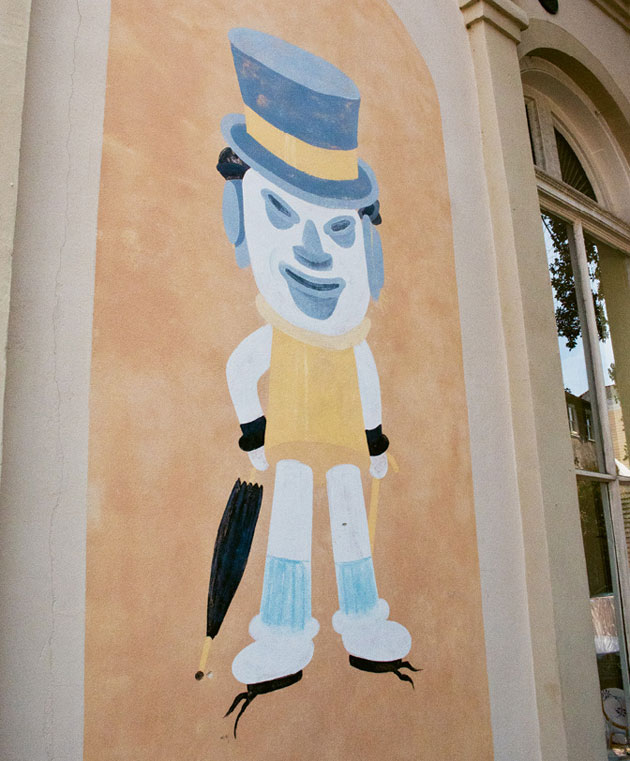
5. The Hat Man has been an icon in the city for decades, but must be repainted frequently due to:
a) The heat
b) The humidity
c) Heavy rains that move in from the West
d) I cannot say in polite company.
a) She’s sweet.
b) She’s pathetic.
c) I’m gossiping, but don’t want to sound mean.
d) I hope she dies in a fire.
e) All of the above
a) The War Between the States
b) The War of Northern Aggression
c) The Late Unpleasantness
d) All of the above
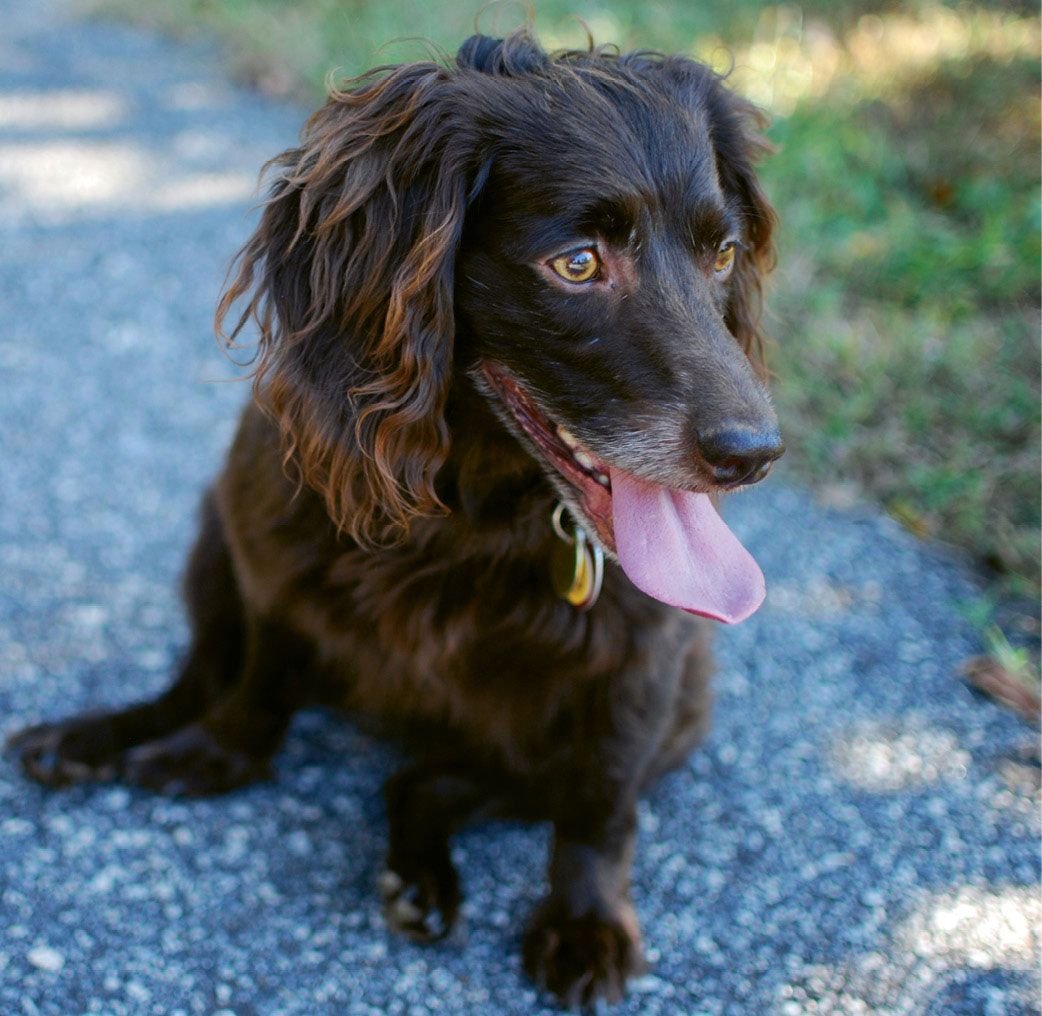
8. The state dog of South Carolina, the Boykin spaniel, is best known for:
a) Its skill at retrieving ducks
b) Its talent in locating doves lost in the deepest briars
c) Its uncanny aptitude for finding and pointing quail
d) Its ability to attend an expensive hunting school, return home, & convince its owners that it’s a sofa & lap dog
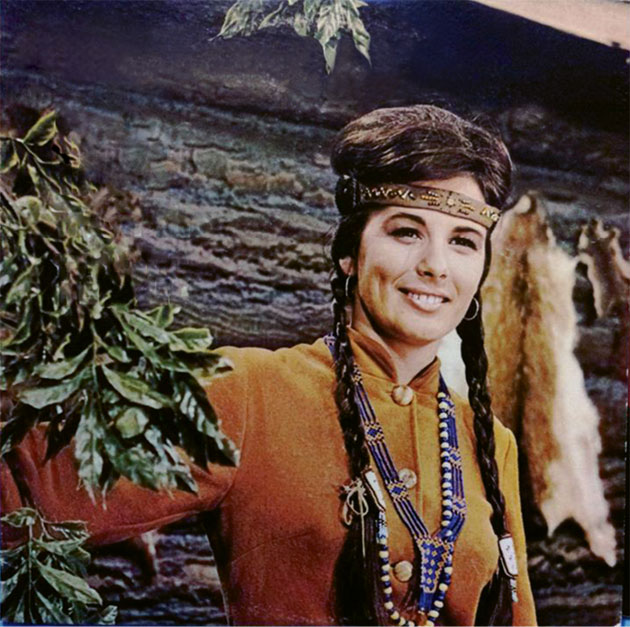
9. Charleston’s Native American TV princess was:
a) Shining Sun
b) Kiawah Kate
c) Happy Raine
d) Stands with a Fist
10. True or false: When visiting the Holy City, it’s illegal to use your blinker.
True
False
11. Which of these is an actual term in Charlestonese?
a) Ben-yah
b) Come-yah
c) U-gee Screet
d) All of the above

12. PHOTO ID: Which of these is a piazza?
a)
b)
13. The Mosquito Fleet is:
a) The children seen sailing on the harbor during the heat of the day
b) A fleet of African-American fishermen from the 1800s
c) The boats participating in the Rockville Regatta each year
d) A swarm of mosquitoes capable of lifting a grown man to the top of a palmetto tree and sucking his blood dry
14. True or false: Charleston once had an African-American, Jewish police chief.
True
False
15. Native Charleston men most desire:
a) The pride of sending a child to an Ivy League school
b) A cameo on Southern Charm
c) College football played year-round
d) A monster-sized buck to put on the wall
16. Which of these is considered an acceptable boat to own?
a) A Glastron
b) A Bayliner
c) A Stingray
d) A 14-foot jon boat powered by a 1978 two-stroke Evinrude that pours smoke like a Chinese paper mill
17. Castle Pinckney was built because:
a) Charleston was preparing to fight in the Revolution.
b) Charleston was preparing to fight in the War of 1812.
c) Charleston was preparing to fight the pirates that ravaged the coast.
d) The Masons (Local #245) were secretly running the world and needed a place to offer sacrifices and drink bourbon.
18. What is the proper pronunciation of Gaillard?
a) GIH-YAHD
b) GUY-YARD
c) GILL-YARD
d) GILL-YAHD
19. When referring to “the Old Bridge” and “the New Bridge,” you are speaking of:
a) The old Sullivan’s Island bridge and the Ben Sawyer Bridge
b) The Ashley River Bridge and the North Bridge
c) The bridges that used to span the Cooper River
d) The Ravenel Bridge and the Don Holt Bridge
20. True or false: The very grumpy-looking man standing atop a column in Marion Square is a statue of Francis “The Swamp Fox” Marion, a heroic figure in Charleston’s fight against the British.
True
False
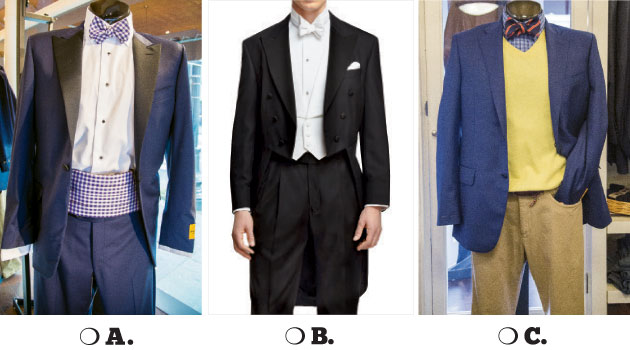
21. What is the “Broad Street tuxedo?”
a) Formal wear purchased at Berlin’s for Men (located on King and Broad streets since 1883)
b) White tie and tails for the St. Cecilia Society debutante ball
c) Khaki pants with a blue blazer, button-down shirt, and bow tie
For every correct answer, give yourself one point.
16-21 points – Blue Blood or Longtime Come-yah: Any ben-yah should score this high, but for a come-yah to achieve this score takes decades and an extraordinary aptitude for absorbing useless information.
11-15 points – Bless Your Heart: Not bad. Sure, you’re not a local, but you’ve been giving it the old gin-and-tonic try. A couple more decades, and you may qualify to be an inmate in “the asylum” known as Charleston, South Carolina.
6-10 points – Tourist: Odds seem good that you’ve been here several times, taken some tours, and heard (but not really listened to) a few locals blah-blah-blah about how wonderful Charleston is.
1-5 points – “From Off,” Way Off: You’ve probably visited Charleston once or twice, fallen in love, and spent some money in the local economy. However, rational thinking has prevented you from selling everything and moving here without a job lined up. This is not something to feel bad about, because you are beloved; in fact, you and your brethren are Charlestonians’ favorite people in America. You are always welcome to visit.
1. Which of the following phrases may be used by a Charleston man at any time in response to any statement?
Answer:
a) “Ah hee dat, Bo!” is a multi-use expression, suitable for any occasion. “I hate my job,” or “It’s hot—I’m wearing a poplin suit,” or “My wife threw me out,” or “This has been the best day of my life.” No matter how different, all sentences can be acknowledged and affirmed by “Ah hee dat, Bo!”
2. What time is the traditional dinner here?
Answer:
a) 2 p.m.
Dinner is a large meal eaten at 2 p.m. Supper is a smaller meal of lighter fare that occurs around 7 p.m. Back in the day, local businessmen would go home for dinner, return to work, then be home for supper. Due to the discovery that eating fried chicken, white rice and gravy, green beans, and apple pie makes for an overwhelming food coma, the tradition isn’t seen much anymore.
3. Pluff mud...
Answer:
e) All of the above
Pluff mud was, for centuries, an unnoticed part of life in the Lowcountry. It was the “stuff” where oysters grew or that engulfed you after you were launched from a boat-towed inner tube. Its potential to exude horrifying smells and ability to immobilize you faster than quicksand was just…there. It wasn’t until the “come-yahs” (see question 11) began marveling at this wonder that “ben-yahs” realized—with horror—that there was something special about the Lowcountry they hadn’t yet noticed and laid claim to as their own.
4. True or False:
The place where virtually every Charlestonian under the age of 50 drank their first beer in a bar was Big Jim’s.
Answer: False
The actual name of the bar was Big John’s Tavern, a pre-1990 magnet for every 16-year-old with a fake ID. Big John was once a lineman for the New York Giants, a fact unknown to an ill-advised thief who attempted to rob his establishment. Big John told him to leave, and the robber shot him in the neck…then ran. Big John stemmed the bleeding with what surely must’ve been history’s most unsanitary bar rag, gave chase, pummeled the hapless fool into oblivion, waited for the police to arrive, then drove himself to the ER. Is there any wonder everyone wanted to drink beer with him?
5. The Hat Man has been a Charleston icon for decades, but must be repainted frequently due to:
Answer:
d) I cannot say in polite company.
Located on the corner of Church and Broad, the Hat Man first arrived in Charleston in the 1890s as an advertisement for the haberdashery inside the building. Every couple of years, someone feels called to ensure passersby know that the Hat Man is indeed a man and spray-paints the anatomical addition by which males are most readily identified.
6. What does a local lady mean when she says, “Bless her heart”?
Answer: e)
All of the above
Once mastered, this phrase is extraordinarily useful. Let’s take a listen, shall we?
“She volunteers at the homeless shelter, bless her heart.”
“She’s a raging alcoholic, bless her heart.”
“She can’t help where she comes from, bless her heart.”
“She’s engaged to a billionaire? Well, bless her heart.”
7. Charlestonians refer to the Civil War as:
Answer: d) All of the above
To Charlestonians, the use of the words “Civil War” to describe the War for Southern Independence is—well, them’s fightin’ words. A civil war is fought between citizens of the same country in a quest to gain power and rule over the land. The Confederate States declared themselves a new nation and requested the United States armed forces skedaddle. There was never an intention to overthrow the federal government and gain national power, and thus no “civil war.”
8. The state dog of South Carolina, the Boykin spaniel, is best know for:
Answer: d) Its supernatural ability to attend an expensive hunting school, return home, and within two days, convince its owners that it’s a sofa and lap dog
About one percent of hunting dogs in the Lowcountry actually hunt, but for some reason, everyone with a yard larger than 1/8 acre feels the need to own one. Within this calling is the Charleston male’s insistence his dog attend a “hunting” school that lasts weeks and costs north of $1,000 to turn his pup into a bird-retrieving machine. Upon arriving home, no breed is more adept than the Boykin at shaking off this training and returning to its rightful place on the sofa.
9. Charleston’s Native American TV princess was:
Answer: c) Happy Raine
In the 1960s and ’70s, Charleston’s most beloved TV star was Happy Raine, played by Lorraine Evans. Her Happy Raine Show first aired on WCSC; in between Looney Tunes cartoons, she interviewed her child guests. As for the local kids who made it onto the show? Let’s just say the rest of us experienced our first cases of white-knuckled jealousy and rage.
10. True or False:
When visiting the Holy City, it’s illegal to use your blinker.
Answer: Either answer is correct.
It is believed by locals that there’s a sadistic experiment being conducted within the greater Charleston area by the Federal Highway and Safety Administration. The theory goes that the administration utilizes a microwave signal to disable the blinkers on every visiting car. The theory has never been proven, and thus either answer is acceptable.
11. Which of the following are actual terms in Charlestonese?
Answer:
d) All of the above
a) Ben-yah. This is someone who’s “been here” his or her entire life—aka born here. Recent modifications allow elementary-school-aged children who move here to achieve ben-yah status, but not their parents. No adult relocating to Charleston can ever become a ben-yah.
b) Come-yah. This is someone who “came here” after the age of 10. South of Broad is now 95 percent come-yah.
c) U-gee Screet. This is Huger Street. As a point of reference, here are a few more street pronunciations that may help you sound more like a ben-yah:
Prioleau = Pray-Low
LeGare = La-Gree Vanderhorst = Van-Drost Hasell = Hay-Zel
12. PHOTO ID: Which of these is a piazza?
Answer: a) The porch of a single house
The piazza of a local home—referred to by normal people as a “porch”—played an important role in pre-air-conditioned Charleston, when the leading causes of death were heat exhaustion, heat stroke, and drowning in sweat. For all intents and purposes, families lived on the porch during the 340 days of summer, even dining, dressing, and sleeping there. The opposite side of the house contains very few windows, in order to provide privacy for the family next door.
13. The Mosquito Fleet is:
Answer: b) A fleet of African-American fishermen from the 1800s
Beginning during the days of slavery and continuing until the 1950s, the Mosquito Fleet consisted of African-American fishermen sailing to the open sea for both commercial and subsistence purposes.
14. True or False:
Charleston once had an African-American, Jewish police chief.
Answer: True
The late Reuben Greenberg, who served the city for 23 years, was the top cop during Hurricane Hugo and announced publicly on the topic of looters, “Don’t arrest anybody. Beat ’em. We have nowhere to put them.” Awesomeness in Blue. RIP, Chief.
15. Native Charleston men most desire:
Answer: d) A monster-sized buck to put on the wall (Although you should give yourself .5 point if you chose c) College football played year-round.)
It’s a very close call. Whitetail deer are very skilled in the art of staying alive, and the big bucks go pretty much nocturnal at age four or five. But they are, after all, males, so during mating season, they come out of hiding and run around chasing does like Australian shepherds on meth. Since mating season occurs in the fall, a huge rack on your wall indicates you just might’ve missed a college football game to go hunting. Now that’s commitment.
16. Which of these is considered an acceptable boat to own?
Answer: d) A 14-foot jon boat
Glastrons, Bayliners, and Stingrays fall into the category of “bowriders,” which are known locally as “sofa boats.” They are comfortable and great for families, which is exactly why they are shunned. An acceptable boat must be a working or fishing boat, and in the hierarchy among such vessels, nothing tops a jon boat with a crappy engine. Small, flat, made of aluminum, tiller-driven, and prone to break down, its only purpose is toil, thus it sits atop the pyramid. If you see one, it’s tradition to ask the captain if it’s for sale. Don’t worry. It won’t be. Your response, “Ah hee dat, Bo!”
17. Castle Pinckney was built because:
Answer: b) Charleston was preparing to fight in the War of 1812.
Due to all the early-1800s saber rattling in Europe, the Founding Fathers decided it would be wise to shore up harbor defenses across the nation. Shutes’ Folly island was identified as a good place to build a fort, and the Feds asked for the deed to it. When the Charlestonians finished laughing, the Feds said, “No deed, no fort.” After another round of raucous laughter, locals raised the money and built it themselves. The Founding Fathers were right, and the War of 1812 materialized—but none of it was fought down South. Castle Pinckney has gone on to a long history of doing, well, not much. The Sons of Confederate Veterans recently purchased it from the Federal government for the sum of $5, paid in Confederate money.
18. What is the proper pronunciation of “Gaillard”?
Answer: a) GIH-YAHD
The extremely odd pronunciation of Charleston words is believed to be a result of our predilection to drink. I mean, how do you get GIH-YAHD out of a word phonetically pronounced as GAL-LEE-ARD?
19. When referring to “the Old Bridge” and “the New Bridge,” you are speaking of:
Answer: c) The bridges that used to span the Cooper River
Prior to the construction of the Arthur Ravenel Jr. Bridge, two structures carried commuters from Charleston to Mount Pleasant: the Old Bridge, held together by rust, and the New Bridge, held together by newer rust. Replacement efforts were put into fast-forward when the Old Bridge underwent an engineering inspection. Rated on a safety scale of one to 100, the Old Bridge garnered a three.
20. True or false:
The very grumpy-looking man standing atop a column in Marion Square is a statue of Francis “The Swamp Fox” Marion, a heroic figure in Charleston’s fight against the British.
Answer: False
While the square is named for Francis Marion, the grim-looking fellow supervising the place is John C. Calhoun. A lifelong politician representing South Carolina, he was a fierce proponent of states’ rights and slavery. It cannot be stressed enough the importance of Googling photos of him, should you like to peer into the eyes of... Fury? Insanity? Trust me—Google him.
21. What is the “Broad Street tuxedo?”
Answer: c) Khaki pants with a blue blazer, button-down shirt, and bow tie
There is no easier way to look like a local. The basics are simple: khakis, a cotton button-down shirt, a bow tie, and a blazer. As long as the basics are in place, it is acceptable to add a few (very few) touches of one’s personal style. Except for a wedding that begins at 6 p.m. or later, the Broad Street tux is acceptable for any occasion. For occasions like oyster roasts and mug shots, the bow tie should be removed.